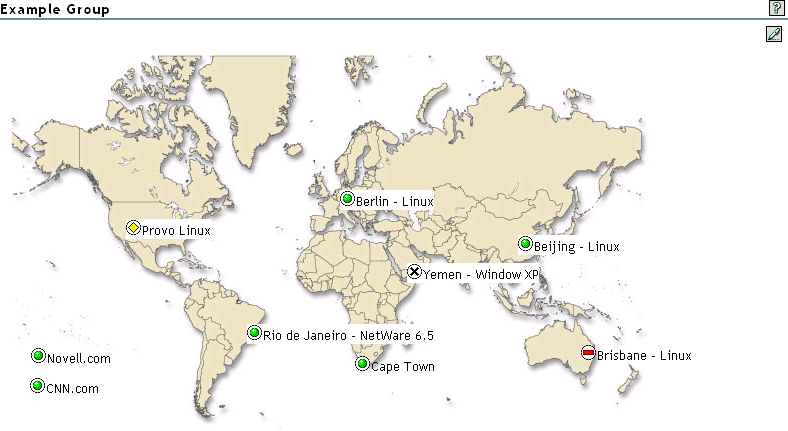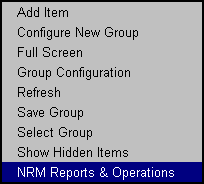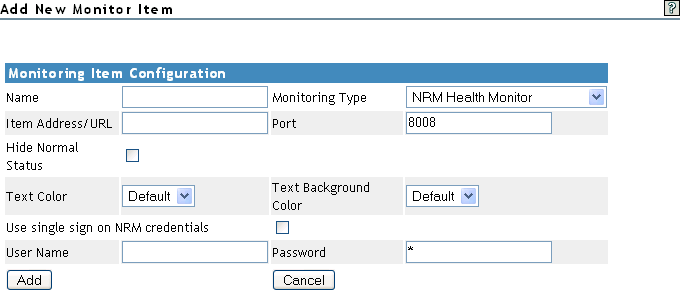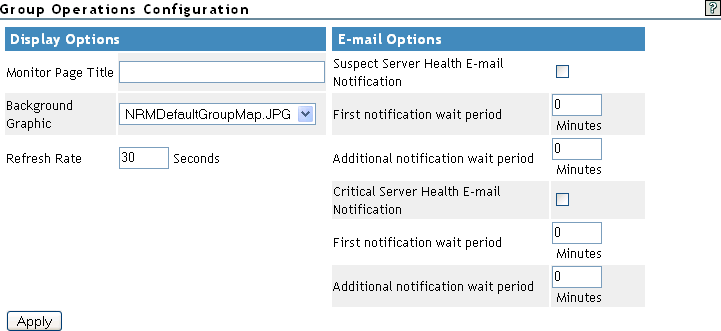11.1 Building and Configuring a Monitoring Group
Novell Remote Manager lets you build and configure groups of items for monitoring Linux server or NetWare server health, as well as providing various statistics for servers running other operating systems. A few of the preconfigured monitoring item types are NRM Health Status for a single server or a group of servers, Ping to a specific port, IP connectivity, and status of connectivity to a Web page.
Monitoring items can be defined and represented by icons on a page as shown in the following figure. The icons can represent a single item or a group of items.
Figure 11-2 Example Novell Remote Manager Server Health Group with Connectivity to a Web Page and Ping Items.

To build and configure a new monitor group:
-
Click the link in the navigation frame.
-
Right-click the page.
HINT:If your browser does not support right-click functionality, try double-clicking the icon
 in the upper-right corner of the page.
in the upper-right corner of the page.
You should see a menu that looks like the following:

-
Click , and do the following:
-
Complete the Monitoring Item Configuration form.

For each item you add to a group or want to change from the default setting (health monitor), complete the following options on the Monitoring Item Configuration form.
You can also define your own monitoring types or edit the default defined health types by editing the XML data in the sys:\login\nrmgrouphealthinfo file. For more information, see Defining or Editing Group Monitoring Types.
-
Click .
-
Drag the newly created monitor items to the desired location.
-
-
(Optional) If you want to change any of the following, change the configuration of the group:
-
The label for the group
-
The graphic displayed
-
The refresh rate
-
The suspect and critical e-mail notification for the group
-
Right-click the customized Group page, then click .
-
Complete the fields as desired on the Group Operations Configuration page.

-
Click .
-
-
Perform the desired task, or save the group and perform the task later.
In this release, the only task you can perform on Linux servers is to compare the server up times.
-
(Optional) If you want to reuse the group, save the group.
-
Right-click the customized Group page, then click .
We recommend using a name that represents the group you built.
-
Click and perform the required steps.
See Saving a Group.
-